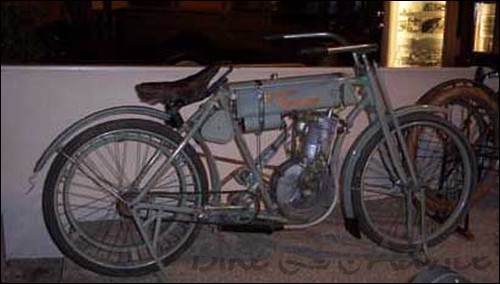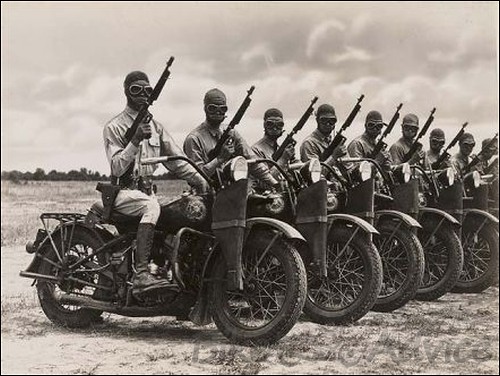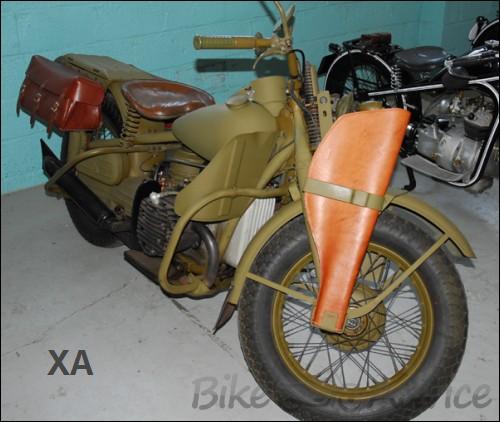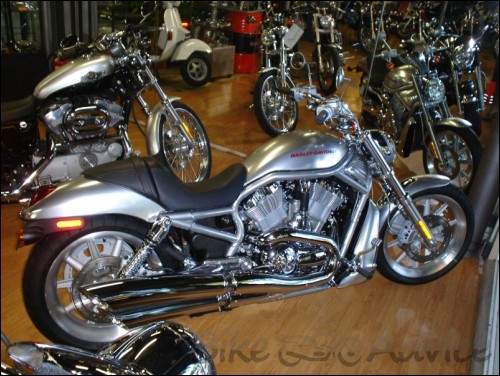Some say the world is all about the survival of the fittest, that it is the basic law of nature that applies to all that exists in this world. Harley Davidson stands with all its pride, showing the rest what it takes to among the best. Its motorcycles have inspired generations and have given rise to biking as a culture. With Harley Davidson’s taking over Indian roads we decided it was time to give you a heads up on the company’s humble beginnings and the road it had to take to get till here.
Beginning: The story of Harley Davidson (commonly abbreviated as HD) began in 1901, in a small town of Milwaukee, in the Wisconsin state of the USA. William S. Harley, who had only completed high school at the time, developed plans and drawings for a single cylinder motorcycle of 116cc which he had intended for use in a regular pedal bicycle frame. He then spent the next two years along with his childhood friend Arthur Davidson using a workshop at Milwaukee to translate the drawings into a reality. In 1903, the work on the bike was completed and so began the legend. As it was the first bike they had developed, it had several flaws, one of which was the fact that it could not climb relatively modest hills without using the pedal, and so like any other great inventor; they dismissed it as a valuable learning experiment.

With their limited budget, they soon began work on their second machine in which they integrated a much bigger engine of 405cc’s. The bike had a loop-frame design which made it among the most advanced bikes of its day. They also received help from a friend named Ole Evinrude, who was at the time, building petrol engines for use in automobiles. The parts of this prototype bike were made at the local rail shops and it was put together in a shed 3 meters wide and 5 meters long, tiny compared to what their factories are today. In September 1904, the fully functional HD placed fourth in a motorcycle race held at the local park. By April 1905, these motorcycles were in production on a very limited basis. The same year they managed to sell about 3 of these bikes from a total of around 12 that were built in the same backyard shed.
The First Factory: The next big step in the history of the HD came in the form of their first factory on Chestnut Street in Milwaukee. This location is where you would find its headquarters even today. The same year around 50 motorcycles were produced. By 1907, William S. Harley had acquired a degree in mechanical engineering and decided to carry out an expansion of the factory with the addition of a second floor and later with additions of Milwaukee’s pale yellow colored bricks. With the additional floor came an increased production and they were rolled out 150 bikes in 1907.
The V-Twin Engine: At the Chicago Auto show in 1907, they showcased a prototype version of the 45 degree V twin engine which featured an 879cc engine which produced about 7 horsepower, this was twice of what the old single cylinder motorcycle could produce, the V twin bike also boasted of a top speed of about 97km/h. During the September of 1907, the company was officially incorporated and they began selling their motorcycles to police departments. This market has since then proved vital to HD.

This rise in demand drove up production to 450 machines annually in 1908 and by 1909, it was increased to 1,149 units. This engine to this day is what makes HD’s stand out from the crowd, apart from its advantages in terms of performance, it had a unique sound, one that was loud and almost wild when revved up and smooth and thumping when on the cruise. Several hundreds of patents were applied on the engine that made sure that there was no one else in the world who could make bikes with this distinctive and appealing noise.
The birth of the V-Twin and the Logo: 1911 was the year when Harley Davidson had designed the trademark bar and shield logos which it used on all its bikes to this day. The same year, there were around 150 manufacturers of motorcycles in the US out of which only just a handful managed to survive even a few years. By 1911, a new improved V-twin model was launched and it featured mechanically operated intake valves as opposed to vacuum operated ones. It had a total displacement of 810cc. The engine, in comparison to the old V-twin was smaller, yet it produced more power. This engine layout proved to be highly successful and due to the high demand, production of bikes with such engines were increased and by 1913, a large majority of the bikes produced sported these engines, with the single cylinder showing a decline in sales. The same year, the old brick factory was demolished and in its place, a new 5 story concrete building was built, this newer building also took up the neighbouring blocks leading to a massive boost in workspace. HD also entered their bikes in motorcycle races and they soon became the dominant bikes on the track. The following year in 1914, production rose to 16,284 machines.
Harley Davidson and the Military: 1917 saw the entry of the United States into the world war and this made Harley Davidson’s factories go into overdrive as they were requested by the military to produce bikes for the war. This had significance in history as it was the first time a motorcycle was used for combat purposes. They contributed about 15,000 machines to the military forces.

Soon after the war, Harley Davidson became the largest motorcycle manufacturer in the world. Their motorcycles were being sold in 67 countries at the time. Production hovered at around 28,000 units a year. This superior achievement provided the impetus for HD to bring in changes to its motorcycles. Several improvements were put in place such as the trademark teardrop gas tank and a 1200cc V-Twin engine, also added was a front brake which was previously unavailable on HD’s.
Challenging times: The great depression, a period of severe economic standstill almost brought Harley Davidson down to its knees. Sales of bikes which stood at about 21,000 in 1929 went straight down to 3,700 in 1933. Several other manufacturers of motorcycles and automobiles had to shut down their factories in order to avoid bankruptcy, but Harley Davidson marched on, proudly unveiling their new bike line-up in 1934. At the end of the whole economic ordeal, Harley Davidson was one among the only two motorcycle manufacturers who managed to survive the depression. A few years later came World War II prompting Harley Davidson to produce motorcycles for the military just like in WWI; their engines were tested to their limits by the military and only a few have ever given up, it was this fact that boosted the commercial sales of Harley Davidson at the end of the war. In total about 90,000 machines were produced for the military and Harley-Davidson were awarded by the Army for their Excellence in Production.
BMW’s against Harleys: During the war, the Germans came up with their solution to the Harley in the form of BMW bikes. These bikes overcame the problems that were present at the time with HD’s such as engine overheating and damage to the chain and belt drive system when used off-road. The solutions were quite ingenious, BMW simply took the V-Twin engine and placed it differently creating the boxer engine where the engine heads hung out of either sides of the bike, this provided superior cooling and made the BMW’s run 56°C cooler than the Harley’s. Also used were shaft drives which proved to be a much more reliable and clever solution to the problems faced by belt or chain driven systems as they were sealed and protected from the elements.

Harley Davidson, under request from the US military created a bike featuring all of these solutions and came up with a new model named XA, it featured shaft drives and a boxer engine and shared no parts with other Harley Davidson’s. This was the same time the Jeep was introduced which could carry much more people and equipment over even the worst terrain. XA’s then were eclipsed by the Jeep and hence never made it into full production. But the earlier HD’s continued to be used by the military albeit for limited escort, courier and policing roles.
Competition and Stained Reputation: Harley Davidson fought stiff competition from Japanese and other manufacturers who imported bikes to the US that had tried to be better than the HD in all ways possible. This led HD to request the US Tariff Commission to impose a 40% tax on imported machines. The same request backfired at HD after they were charged with unfair competition and restrictive practices. The Hollywood movie industry also contributed to damaging Harley’s image with many movies depicting bikers who ride Harley’s as outlaws and gangsters, they were also associated with the infamous Hells Angels gang and several other groups of outlaws which were known to wreak havoc throughout cities with violent and at times, insane crimes.
Near Bankruptcy and Insults: In 1969, The AMF or American Machinery Foundry bought the company, in an effort to revive sales, AMF streamlined production and slashed the workforce which resulted in a labor strike and also lowered the quality of bikes. In essence, at that time, Harley’s were expensive, inferior in performance, handling and build quality when compared to the Japanese motorcycles. The resulting decline in sales almost made HD go bankrupt and the Harley Davidson name was ridiculed in several ways such as “Hardly Ableson” and the nickname “hog” also seemed insulting.
The Revival of the Brand: AMF found no other way to revive the brand and eventually sold the company in 1981 to a group of thirteen investors for about 80 million US$. This led to a massive overhaul of its functioning with a more stringent inventory control system. Harley Davidson at that time claimed that imported motorcycles, specifically from the Japanese, threatened domestic manufacturers of their very existence due to the sheer volume of bikes that were being imported and sold. The US International Trade Commission conducted an investigation into the claim and in 1983, the US president Ronald Reagan imposed a 45% tax on all imported bikes over 700cc’s. This prompted Japanese manufacturers to offer help to Harley Davidson which was eventually rejected.
The New Direction: The new management also decided that Harley Davidson should make its own footsteps and not follow others, hence rather than trying to make better motorcycles than the Japanese, HD made bikes that had a timeless appeal to them, the designs of the new bikes were inspired by their older machines with added input from owners about common customizations. Several components of the bike, like brakes, shock absorbers, carburettors and wheels, were outsourced from foreign manufacturers who made high quality components. The results seemed obvious, the bikes improved in terms of quality and combined with the classic HD looks and design, buyers soon returned. Outsourcing the manufacture of components also proved to be profitable to HD and hence the amount of overseas made-parts was increased while keeping its Made-in-America essence.
Accusations and Workers Strike: The new improved bikes saw record sales for HD and in order to increase growth, Harley Davidson expanded the number of dealerships throughout the US, even then there were waiting lists for almost a year for its most popular models. HD also recorded sales not when the bikes were actually sold, but when they were handed over to a dealer; this practice made it possible for the manufacturer to record high sales figures buy making it compulsory for dealers to accept a specific amount of bikes that were more than actually needed. This led to accusations of stock price manipulations by investors. The workers strike in 2007 took place after a the work contract of 2,700 employees expired, the employees wanted higher wages and benefits, this strike had caused the shut down of all production at the York facility.
Invading India – Mangoes in exchange for Harley’s: Harley Davidson had been researching for quite a while about the possibilities towards importing its bikes to India. The plans were delayed for several years for the single most reason why foreign manufacturers in general hesitate to come to India – Taxes. Also there was no emission norms specified at the time for bikes that were larger than 500cc. By 2007 Kamal Nath, the minister for commerce and Industry came to an agreement with the US authorities whereby Harley Davidson’s could be imported into the country in exchange for the export of Indian Mangoes.
With import duties at 60% and taxes of another 30%, it became obvious that a buyer in India would have to pay double the price. HD felt that demand was high enough in the country that it could overcome all those down sides.

Looking Back: No one ever said that the world would be an easy place to live in, let alone run a business. Harley Davidson came through all of the ups and downs that were thrown at it, with flying colours. The iconic status of the brand has given rise to cult followers and several Harley Owners Groups can be found in all continents across the globe. What makes all its bikes so unique simply lies in its timeless, classic and simple design that appeals to all ages and races. Its macho sounding V-Twin that has been sound-patented ensures that there is only one brand that can produce the thumping machines we all know and love, its Harley Davidson and it’s here to stay.
Regards,
Arun

![Royal Enfield Guerrilla 450 Launch This Year [Speculation]](https://bikeadvice.in/wp-content/uploads/2022/12/Royal-Enfield-Hunter-450-pic-headlamp-100x70.jpg)
